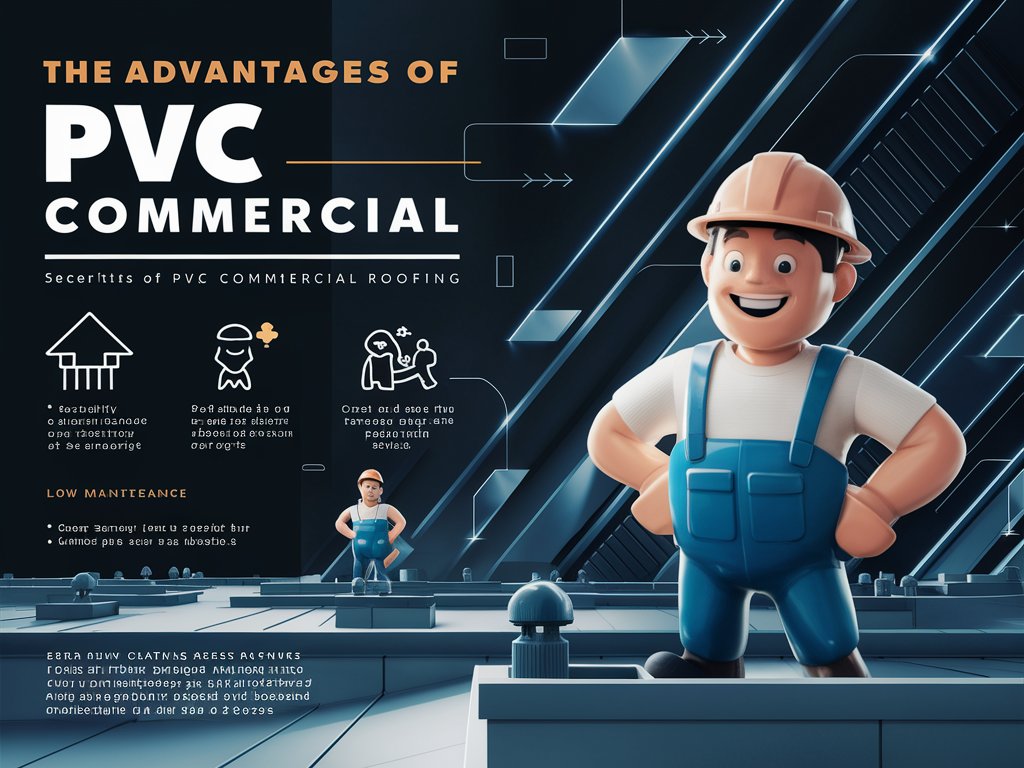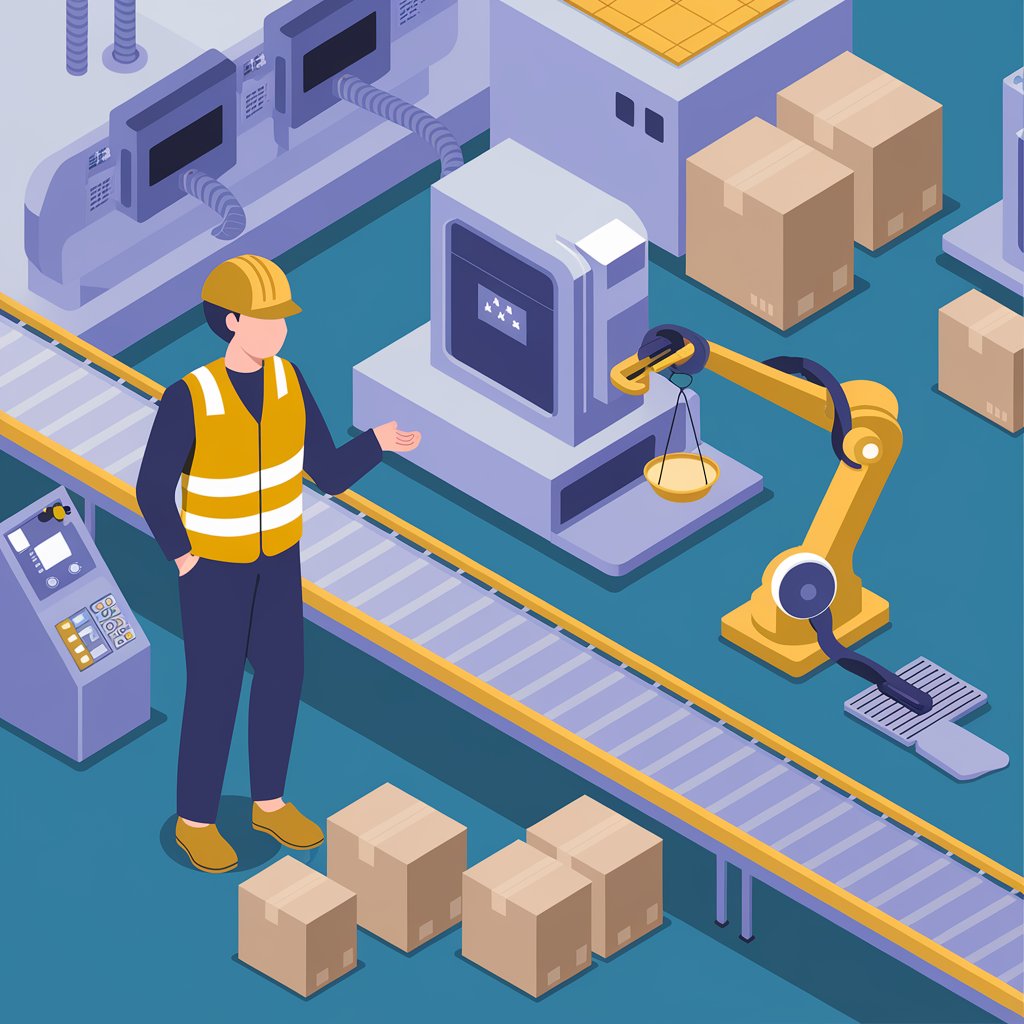Business
Exploring the Advantages of PVC Commercial Roofing
Published
5 months agoon

When it comes to selecting a reliable and efficient roofing solution for commercial buildings, PVC (Polyvinyl Chloride) roofing has established itself as a top contender. Known for its outstanding durability, energy efficiency, and versatility, PVC roofing is a popular choice among building owners and contractors. This article will delve into the composition, benefits, applications, unique features, installation tips, and maintenance advice for PVC commercial roofing.
Introduction to PVC Roofing
PVC roofing is a single-ply membrane roofing system composed of polyvinyl chloride and other additives that enhance its flexibility and performance. The material is known for its strength and resistance to various environmental factors, making it a reliable option for commercial roofing. PVC membranes are typically available in white, which provides excellent reflectivity and contributes to energy efficiency.
Key Benefits of PVC Roofing
PVC roofing offers numerous benefits that make it an attractive choice for commercial properties:
- Durability: PVC roofing membranes are highly durable and resistant to punctures, tears, and impact damage. They also exhibit excellent resistance to UV radiation, chemicals, and fire, ensuring long-lasting performance.
- Energy Efficiency: The reflective properties of PVC roofing help reduce heat absorption, leading to lower cooling costs and improved energy efficiency. This makes PVC roofing an eco-friendly option that can contribute to LEED credits.
- Low Maintenance: PVC roofing requires minimal maintenance due to its inherent resistance to dirt, debris, and biological growth. Regular inspections and cleaning are usually sufficient to keep the roof in optimal condition.
Applications and Suitability
PVC roofing is suitable for a wide range of commercial applications, including:
- Office Buildings: The energy efficiency and durability of PVC roofing make it ideal for office buildings, helping to reduce operational costs and provide a comfortable indoor environment.
- Retail Stores: PVC roofing’s reflective properties can help retail spaces lower their cooling expenses, creating a more pleasant shopping experience for customers.
- Manufacturing Facilities: The chemical resistance and durability of PVC roofing make it an excellent choice for manufacturing and industrial buildings where exposure to chemicals and heavy equipment is common.
Unique Features and Advancements
PVC roofing technology continues to evolve, offering enhanced features and benefits:
- Reinforced Membranes: Modern PVC roofing membranes are often reinforced with polyester or fiberglass, providing additional strength and dimensional stability.
- Heat-Welded Seams: PVC roofing seams are heat-welded, creating a strong, watertight bond that is resistant to leaks and other forms of water infiltration.
- Recyclability: PVC roofing is fully recyclable, making it an environmentally responsible choice that reduces waste and contributes to sustainability.
Installation Tips and Maintenance Advice
Proper installation and maintenance are crucial for maximizing the performance and lifespan of PVC roofing:
Installation Tips
- Surface Preparation: Ensure the roof deck is clean, dry, and free of debris before installing the PVC membrane.
- Proper Fastening: Use appropriate fastening methods and materials as specified by the manufacturer to secure the membrane and prevent uplift.
- Seam Welding: Utilize heat-welding techniques to create strong, watertight seams that prevent leaks and ensure the integrity of the roof.
Maintenance Advice
- Regular Inspections: Conduct routine inspections to identify and address any potential issues, such as punctures, tears, or loose seams.
- Cleaning: Keep the roof surface clean by removing debris and dirt regularly to prevent damage and maintain its reflective properties.
- Prompt Repairs: Address any damage or leaks promptly to prevent further deterioration and extend the life of the roof.
In conclusion, PVC commercial roofing offers a range of benefits that make it a top choice for various commercial buildings. Its durability, energy efficiency, and low maintenance requirements, combined with advancements in technology, ensure that PVC remains a leading option in the roofing industry. By following proper installation practices and maintenance routines, businesses can enjoy the long-lasting performance of their PVC roofs for many years to come.
You may like
-


Understanding Business Loans: A Complete Guide for Entrepreneurs
-


All You Need to Know About Long-Distance Move
-


Why Your Business Needs a Packaging Systems Integrator
-


The Ultimate Guide to Tax Preparation and Planning for Businesses
-


Everything You Need to Know About Renting a Dumpster
-


Artan Window Works Changing Spaces with Masterful Window Solutions
Business
Understanding Business Loans: A Complete Guide for Entrepreneurs
Published
2 months agoon
September 18, 2024
Starting or growing a business often requires capital to fund various aspects, from operations and inventory to expansion and marketing. Business loans can provide the necessary financial support to achieve these goals.
However, understanding the different types of business loans available and how to apply for them can be overwhelming. In this comprehensive guide, we will explore the essentials of business loans, including their types, benefits, application processes, and key considerations to help you make informed decisions for your business.
Types of Business Loans
Business loans come in various forms, each designed to meet specific needs and situations. Here are some of the most common types:
- Term Loans: These are traditional loans where you borrow a lump sum of money and repay it over a fixed period with interest. Term loans can be short-term (less than one year) or long-term (more than one year), and they are typically used for major investments or large expenses.
- Line of Credit: A business line of credit provides access to a revolving credit limit that you can draw from as needed. You only pay interest on the amount you borrow, making it a flexible option for managing cash flow or covering short-term expenses.
- Equipment Financing: This type of loan is specifically for purchasing or leasing equipment. The equipment itself serves as collateral, which can make it easier to obtain financing for high-cost assets like machinery or technology.
- Invoice Financing: Invoice financing allows businesses to borrow money against outstanding invoices. This can help improve cash flow by providing immediate funds while waiting for customers to pay their invoices.
- SBA Loans: Loans backed by the Small Business Administration (SBA) offer favorable terms and lower interest rates. These loans are designed to support small businesses and are often used for a variety of purposes, including working capital and equipment purchases.
- Merchant Cash Advances: This type of financing provides a lump sum of money in exchange for a portion of future credit card sales. It’s a quick option for businesses with strong credit card sales but can be more expensive due to higher fees and interest rates.
Benefits of Business Loans
Securing a business loan can offer numerous advantages for your company. Here are some key benefits:
- Access to Capital: Business loans provide the necessary funding to invest in growth opportunities, cover operational costs, or manage unexpected expenses. This access to capital can be crucial for maintaining and expanding your business.
- Flexibility: Depending on the type of loan, you may have flexibility in how you use the funds. For instance, a line of credit allows you to withdraw funds as needed, while term loans provide a lump sum for specific projects.
- Improved Cash Flow: Loans can help smooth out cash flow by providing funds to cover periods of low revenue or delayed payments. This ensures that you can continue operating and meet financial obligations without interruption.
- Build Credit History: Successfully managing and repaying a business loan can help build your business credit history. This can improve your creditworthiness and increase your chances of securing additional financing in the future.
- Growth and Expansion: Loans can provide the capital needed to invest in new projects, open additional locations, or expand product lines. This can help you achieve long-term growth and business development goals.
How to Apply for a Business Loan
The application process for a business loan involves several key steps. Here’s a general overview:
- Assess Your Needs: Determine how much funding you need and how you plan to use it. This will help you choose the right type of loan and prepare a solid application.
- Check Your Credit Score: Your business credit score and personal credit score (if you’re a sole proprietor or small business owner) will play a significant role in the loan approval process. Review your credit reports and address any issues before applying.
- Prepare Documentation: Gather the necessary documents for your application, including financial statements, tax returns, business plans, and legal documents. Lenders will use this information to assess your creditworthiness and the viability of your business.
- Research Lenders: Explore different lenders and loan options to find the best fit for your needs. Consider factors such as interest rates, repayment terms, and fees. This could include traditional banks, credit unions, online lenders, and alternative financing options.
- Submit Your Application: Complete and submit your loan application along with the required documentation. Be prepared to answer additional questions or provide further information if requested by the lender.
- Review and Accept Terms: If approved, carefully review the loan terms and conditions before accepting. Ensure that you understand the repayment schedule, interest rates, and any associated fees.
Important Considerations
Before taking out a business loan, consider the following factors:
- Interest Rates: Compare interest rates among different lenders to ensure you’re getting the best deal. Lower rates can save you money over the life of the loan.
- Repayment Terms: Understand the repayment terms, including the length of the loan and the frequency of payments. Make sure the terms align with your business’s cash flow and financial projections.
- Fees and Costs: Be aware of any additional fees or costs associated with the loan, such as origination fees, prepayment penalties, or late fees. Factor these into your decision-making process.
- Impact on Business: Evaluate how the loan will impact your business’s financial health. Ensure that taking on debt will not strain your cash flow or hinder your ability to manage other financial obligations.
- Alternatives: Consider alternative financing options, such as equity financing or grants, if a business loan is not the best fit for your needs. Exploring all options can help you make the most informed decision.
Conclusion
Business loans can be a valuable tool for entrepreneurs looking to fund growth, manage cash flow, or invest in new opportunities. By understanding the different types of loans available, the benefits they offer, and the application process, you can make informed decisions that support the success and development of your business. Carefully consider your needs, research your options, and choose a loan that aligns with your financial goals. With the right approach, a business loan can provide the capital needed to achieve your business objectives and drive long-term success.

Moving long distances is both exciting and challenging. Whether you’re relocating for a job, family, or just a fresh start, proper planning is crucial to ensure everything goes smoothly. One of the biggest concerns is how long the move will take, along with preparing your family and pets for the journey. For those moving to or from Tampa, it’s also important to find a reliable moving company to handle the job professionally.
How Long Does a Long-Distance Move Take?
The duration of a long-distance move can vary based on several factors. On average, it can take anywhere from a few days to few weeks. Let’s explore the key factors that influence this timeline.
1. Distance Between Locations
- The farther you’re moving, the more time it will take. For example, a move from Tampa to a nearby state might take a few days, but a cross-country move can extend to two weeks.
- Moving companies need to factor in driving time, stops, and the complexity of delivering to different states.
2. The Size and Complexity of the Move
- The size of your move plays a big role in determining how long it will take. Larger households with more belongings, including fragile or bulky items, often require more time for packing, loading, and unloading.
- Moves that involve specialty items, such as pianos or large furniture, can extend the process.
3. Weather and Road Conditions
- Weather is a critical factor that can either speed up or delay your move. For instance, if you’re moving during Tampa’s hurricane season, your plans might be delayed due to storms or road closures.
- Similarly, moving in winter months, especially to colder regions, can introduce challenges like snow, ice, or poor road conditions.
- If you’re looking for experienced movers in areas like Victoria, it’s smart to check out options like Paramount Moving, which specializes in long-distance and commercial moves.
How to Make a Mind of Your Family for a Long-Distance Move
Moving can be an emotional process for your family, especially children. Making planning for them will make the move easier..
1. Talk About the Move Early
- Start discussing the move with your family as soon as the decision is made. This allows everyone to process the idea and prepare mentally.
- Children, in particular, may need extra time to adjust, so it’s important to explain the reasons behind the move and what they can expect.
2. Create a Family Packing Plan
- Involve your family in the packing process.
- Create a checklist and assign tasks to everyone, from decluttering rooms to packing personal belongings.
- This keeps everyone engaged and helps lessen the stress of the move. Plus, it ensures nothing gets left behind.
3. Maintain Some Routine for Comfort
- During the chaos of packing and moving, maintaining a semblance of routine can help everyone stay grounded.
- Try to stick to normal meal times, bedtimes, and family activities whenever possible. This familiarity will provide comfort, especially for younger children.
How to Get Your Pet Ready for a Long-Distance Move
Pets are sensitive to changes in their environment, and a long-distance move can be stressful for them. Here’s how to keep your pets comfortable during the transition.
1. Visit the Vet Before the Move
- Take your pets to the vet before moving day to ensure they’re healthy for travel.
- Update vaccinations and obtain any medications they might need, especially if your pet suffers from anxiety.
- Your vet can provide useful advice on making the trip more comfortable for them.
2. Pack a Pet Essentials Bag
- Prepare an additional bag only for your pet, just like you would for your family’s necessities.
- Include food, water, toys, and any medications for your pets.
- If you’re traveling by car, bring a portable water bowl and plan regular stops so your pet can stretch and stay hydrated.
3. Make the Journey Stress-Free
- Whether you’re driving or flying, keeping your pet calm is key. When driving, ensure that your pet is comfortable in the car and is safely restrained in a carrier or seatbelt harness.
- For flights, familiarize yourself with airline policies for pets to avoid last-minute complications.
Final Thoughts
Depending on the distance, the weather, and the intricacy of the transfer, a long-distance relocation may take a few days to a few weeks. Your family and pets will feel less stressed and the transfer will go more smoothly if you prepare them well in advance. Your items will arrive promptly and safely if you choose to hire reputable professional movers like https://paramountmoving.ca/victoria/service/commercial-moving-in-victoria/ for your relocation to or from Tampa.
FAQs
What should I do to minimize moving delays?
Plan your move outside peak seasons and avoid holidays when traffic is heavier.
Can I move during Tampa’s hurricane season?
It’s best to avoid moving during hurricane season to prevent delays and possible damage to your belongings.
How can I keep my pets calm during the move?
Maintain their routine, offer familiar toys, and speak to your vet about possible calming treatments.
Business
Why Your Business Needs a Packaging Systems Integrator
Published
2 months agoon
September 13, 2024
A packaging systems integrator is a specialized professional or company that brings together various packaging machines, software, and technologies into a seamless and efficient packaging line. Their role is to design, implement, and optimize integrated systems that enhance productivity and reduce operational costs. For businesses looking to improve their packaging operations, partnering with a packaging systems integrator can be a game-changer.
The Role of a Packaging Systems Integrator
A packaging systems integrator plays several crucial roles, including:
- System Design: Creating a custom solution tailored to the specific needs of the business, considering factors like production volume, product type, and budget.
- Equipment Selection: Identifying the right combination of packaging machines, conveyors, robotic arms, and other components to form an efficient packaging line.
- Software Integration: Ensuring that all machines and systems communicate effectively, often by implementing Manufacturing Execution Systems (MES) or Warehouse Management Systems (WMS).
- Installation and Testing: Overseeing the installation of equipment and software, followed by rigorous testing to ensure everything functions correctly and efficiently.
- Ongoing Support: Providing maintenance, training, and support to ensure the integrated system continues to operate at peak performance.
Benefits of Partnering with a Packaging Systems Integrator
Working with a packaging systems integrator offers numerous benefits, such as:
- Expertise and Experience: Integrators have specialized knowledge and experience, enabling them to design efficient and innovative packaging systems that meet the specific needs of the business.
- Reduced Implementation Time: With their expertise, integrators can streamline the implementation process, minimizing downtime and ensuring a faster transition to the new system.
- Optimized Performance: By designing a custom solution, integrators ensure that the packaging line operates at maximum efficiency, reducing waste and lowering costs.
- Scalability and Flexibility: Integrators create systems that can adapt to changing business needs, allowing for future expansion or modification without significant disruption.
Challenges to Consider When Hiring a Packaging Systems Integrator
While partnering with a packaging systems integrator offers many benefits, there are challenges to be mindful of:
- Initial Costs: Hiring an integrator can involve significant upfront costs, including fees for consulting, equipment, and installation.
- Compatibility Concerns: Ensuring that new equipment and software are compatible with existing systems can be complex and require careful planning.
- Customization Needs: Highly specialized or unique packaging requirements may necessitate additional customization, which can extend project timelines.
To mitigate these challenges, businesses should conduct thorough research, seek referrals, and evaluate multiple integrators before making a decision.
Best Practices for Working with a Packaging Systems Integrator
To maximize the benefits of working with a packaging systems integrator, consider the following best practices:
- Clearly Define Your Goals: Be specific about what you want to achieve, whether it’s reducing costs, increasing throughput, or improving accuracy.
- Communicate Openly: Maintain open lines of communication with your integrator, providing them with detailed information about your current processes and future needs.
- Request a Detailed Proposal: Ask for a comprehensive proposal that outlines the integration plan, timeline, and costs, so you have a clear understanding of what to expect.
- Monitor Progress: Stay involved throughout the process, regularly checking in on progress to ensure that the integration is on track and meeting your expectations.
- Plan for Ongoing Support: Ensure there is a plan for ongoing maintenance, training, and support to keep the system running smoothly over time.
Conclusion
A packaging systems integrator can provide invaluable expertise and support for businesses looking to enhance their packaging operations. By leveraging their specialized knowledge, businesses can achieve a more efficient, scalable, and cost-effective packaging process. If you’re looking to improve your packaging line, consider partnering with a packaging systems integrator to help you reach your operational goals.

Understanding Business Loans: A Complete Guide for Entrepreneurs

All You Need to Know About Long-Distance Move

Why Your Business Needs a Packaging Systems Integrator

yt.be Activate: Activating YouTube with yt.be

Finance and Maneuver in Business

